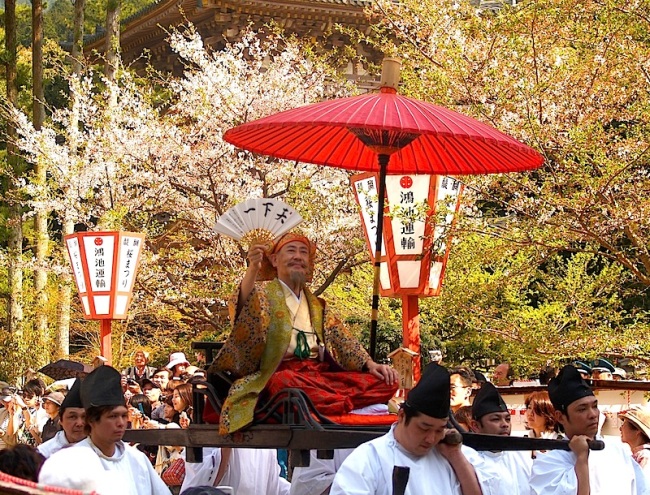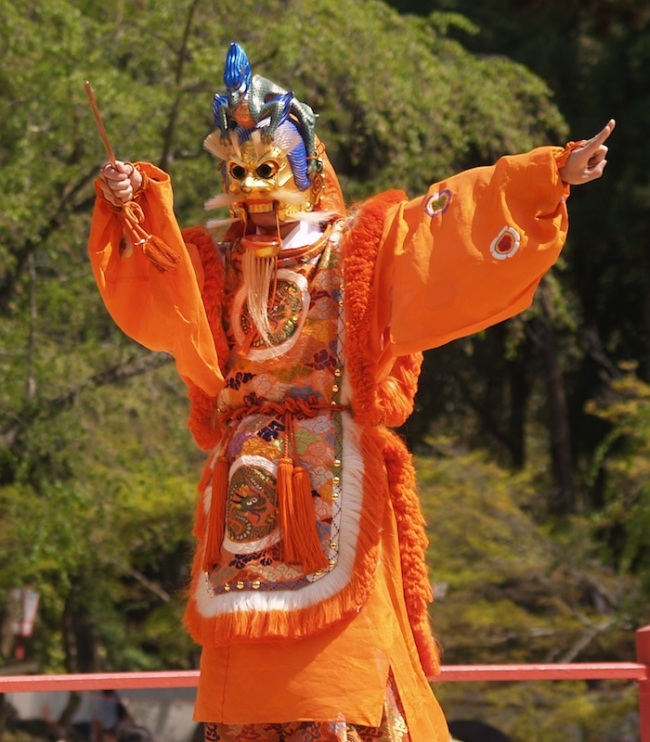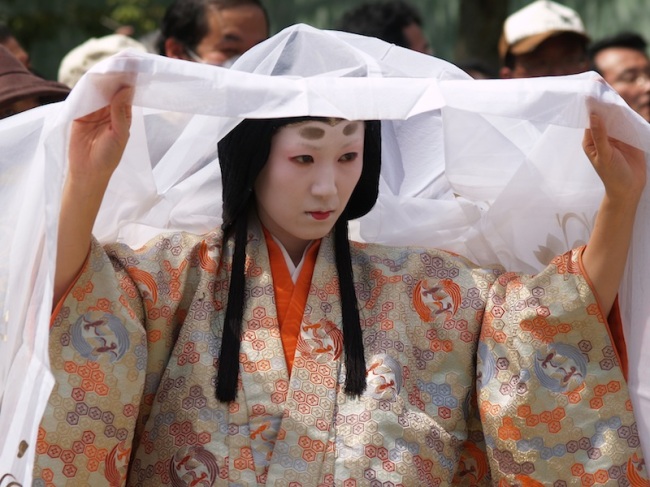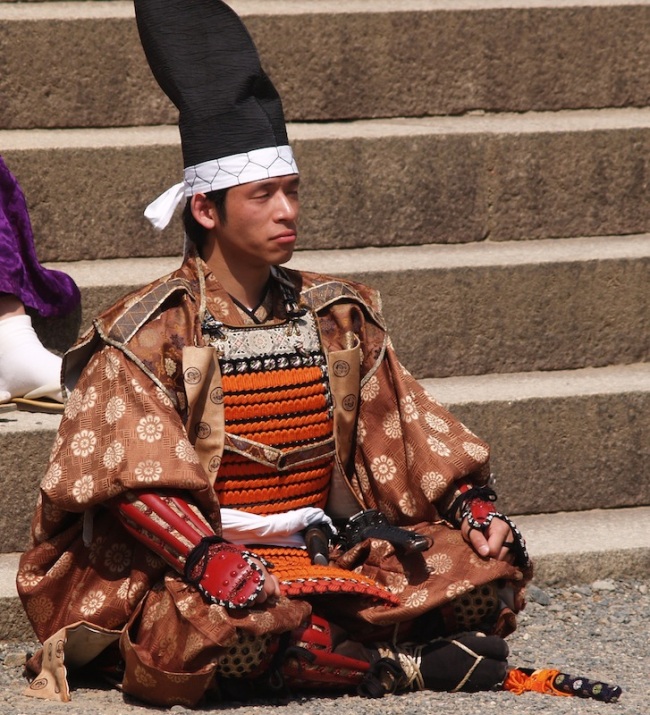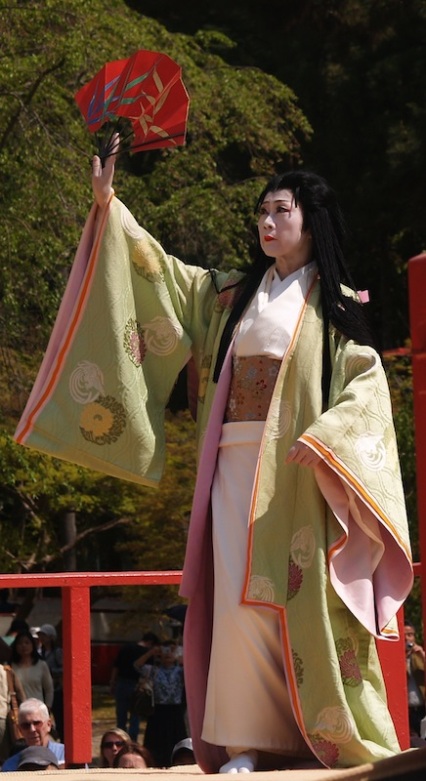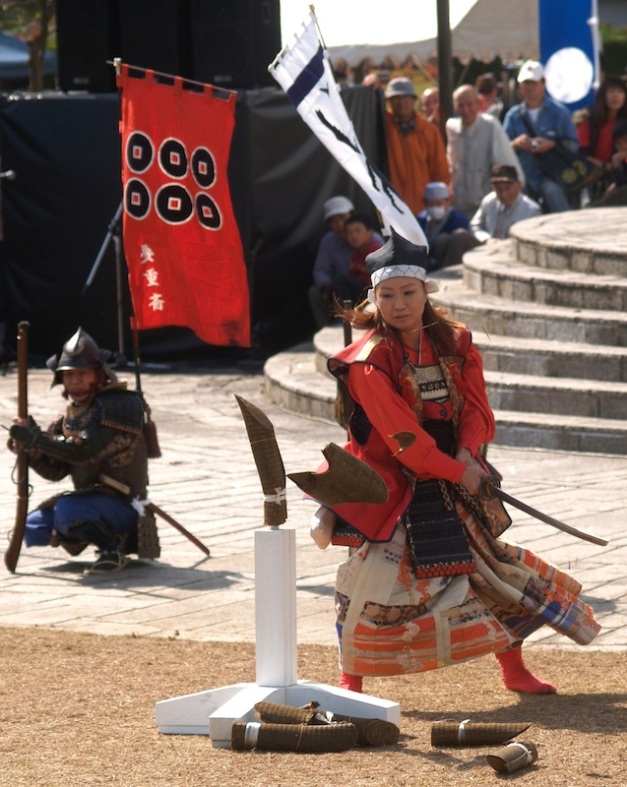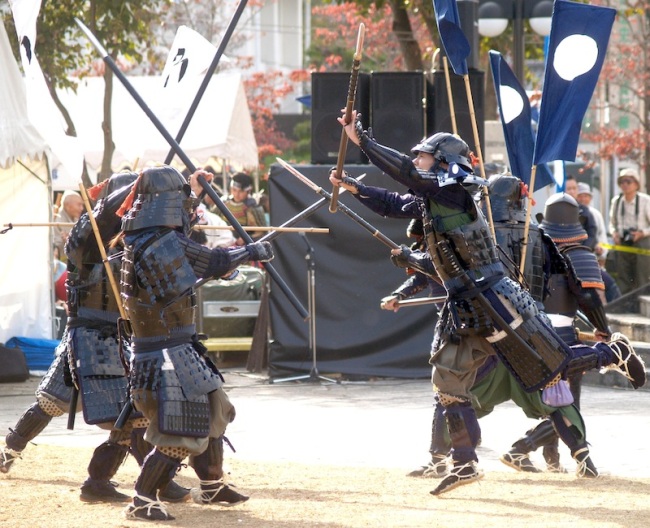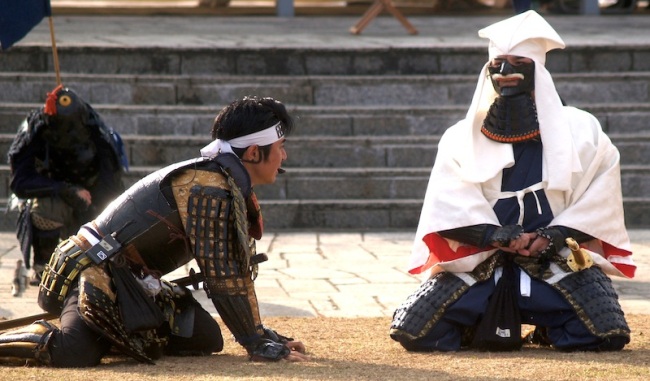Japanese Craft Beer&History – Yanaka Beer
Join some Jvloggers enjoying Japanese craft beer at the Yanaka Beer Hall in Nippori while discussing the traditional Yanaka area of Tokyo and Japanese history. First beer is Yanaka Beer.
Second Beer – Yanaka Dry and the story of how Tokyo came out
Third Beer – Yanaka Golden and Ota Dokan the first builder of Edo Castle
Fourth Beer – Yanaka Bitter and the 47 Ronin Temple in Yanaka
Samurai Warlord’s Kyoto Cherry Blossom Festival – Taiko Hanami Gyoretsu
Samurai Battle Festival – Battle of Sekigahara Festival
In the small town of Sekigahara a festival is put on to commemorate one of the most decisive battles in Japanese history – the Battle of Sekigahara. In 1600, two massive armies converge on Sekigahara and fought a great battle. The winner, Tokugawa Ieyasu went on to become shogun and started a new era known as the Edo Period named after his capital which is today Tokyo.
The main star at the festival is not either of the two opposing leaders suprisingly but Otani Yoshitsugu, a warlord suffering from leprosy who fought for the Western Army against Tokugawa. He’s the tragic hero of the tale of Sekigahara. It’s his forces which get attacked from the rear by a turncoat by the name Kobayakawa Hideaki.
Overall it’s a small re-enactment for such a pivotal piece of history but they do a good job with the drama.
Magome – Old Japanese Post Town in Kiso Valley
Magome is old Japanese Post Town on the old Nakasendo Road which used to connect Tokyo to Kyoto during the Edo Period (1603-1867). Travelers would stop at towns like Magome to stay the night and for checkpoint inspections as travel was highly regulated in those days.
Magome has some really nice old fashion buildings and the main part is closed to vehicle traffic. From Magome there is a two-hour hike to another post town, Tsugamo, but I didn’t have the right winter gear for it. Maybe next time.
Gokaicho: 7-year festival at Zenko-ji Temple in Nagano, Japan
Every seven years, at the temple of Zenko-ji in Nagano City they reveal a statue that is normally kept hidden. The statue is a 13th Century replica of a Buddhist statue which supposedly was the first Buddhist statue to officially come to Japan in the 6th Century.
This first introduction of Buddhism set off a religious war which was more about political power than anything else between the Soga clan and the Mononobe and Nakotomi clans. The statue got tossed into the river but was later fished out and ended up at Zenko-ji in Nagano. A replica was made during the Kamakura Period (1192-1333) and that one is revealed to the public every 7 years.
The 7 year festival occurred this year and the last time to see it was the end of May so I went there during May to get a glimpse of the statue and a glimpse at Japan’s history.
Kyoto’s Festival of Ages – Jidai Matsuri Part II
Kyoto’s Festival of the Ages
A look at the Jidai Matsuri (Festival of Ages) of Kyoto: Part II

An Imperial Guard – statues of these guards can be found at certain Shinto shrines
Court nobles and Imperial guards represent the Fujiwara Period (897-1185), a time when the powerful noble family, the Fujiwara, controlled the governance of the country as ministers to the imperial court. One of the most powerful Fujiwara ministers was Fujiwara-no-Michinaga (966-1027). He arranged to have his daughters marry the emperors and have his grandson of one of these unions ascend the throne. In time the Fujiwaras’ power weakened and they had to rely more often on the warrior families, chiefly the Heike and the Genji, to control the country. Eventually, the Fujiwara would be succeeded by the military Heike family who in turn were destroyed by the Genji in the Gempei War.

The fierce Tomoe Gozen – samurai warrior woman
Following in the train of the Fujiwara nobles comes some of the most famous women of Japanese history. Astride a horse dressed in samurai armor carrying the deadly long-bladed naginata is Tomoe Gozen. Tomoe fought beside her husband, Minamoto-no-Yoshinaka, as one of his most trusted captains in the Gempei War. In 1183, Yoshinaka captured Kyoto from Heike forces. His success went to his head and his ever-suspicious cousin, Yoritomo, ordered his half-brother, Yoshitsune, to destroy the would-be upstart. Tomoe fought gloriously in her husband’s last battle. Reports of her end are mixed. Some say she died in battle, others that she took Yoshinaka’s head with her and perished in the sea, and others say she ended her days as a nun.

Famous Writers of the 11th Century: Sei Shonagon and Murasaki Shikibu
The writers Sei Shonagon and Murasaki Shikibu follow the warlike Tomoe. Sei Shonagon (966-1025) was a sharp-witted lady of the court whose observations of courtly life are preserved in her famous work: “Makura-no-Soshi” (The Pillow Book of Sei Shonagon). Murasaki Shikibu (980-1014), also a lady of the court, penned the internationally renowned classic, the “Genji Monogatari” (Tale of the Genji).


The first Shogun and his troops returning after a successful campaign
The next military procession is of the early samurai warriors of the 9th century led by General Sakanoue Tamuramaro. Sakanoue was the first military commander to be named “Shogun” by Emperor Kammu. Originally, the title “shogun” was given temporarily to military leaders to subdue the turbulent Ezo (Ainu) natives of Tohoku, the northern region of Japan. This procession depicts the triumphant return of the Shogun Sakanoue after a successful campaign.

A court noble from Kyoto’s early days
Court nobles wearing straight swords come next to greet the emperor of the early Heian Period (794-1185). The colors of their robes signify their rank.

Boys dressed in colorful costumes with bird wings on their backs
Children wearing colorful costumes with the wings of butterflies or mythical birds on their backs precede the arrival of the mikoshi (portable shrine) of Emperors Kammu and Komei.

Mikoshi – portable shrine – of the spirit of the first and last reigning emperors in Kyoto
The Shinko-Retsu (Procession of the Sacred Carriages) brings a close to the Jidai Matsuri. The two mikoshi transfer the spirits of Kammu and Komei to the Heian Shrine.

Late 8th Century Archer who guarded Emperor Kammu’s procession into Kyoto on Oct. 22, 794
Accompanying the mikoshi are 8th – 9th century archers from the Tamba region noted for their skills with the bow. When Emperor Kammu first moved the capital to Kyoto, these archers guarded his sacred procession into his new capital. And with their departure, the Festival of Ages with its glimpse into the past draws to a close.

A Poet of an earlier age peeks out at the modern world
Kyoto’s Jidai Matsuri – Festival of Ages Part 1
Kyoto Celebrates History with Festival Parade
Japan’s Imperial city on full display during ‘Jidai Matsuri’

An Imperial Princess with two attendants from yesteryear
Every year on Oct. 22, the city of Kyoto celebrates its long history with the Jidai Matsuri — “Festival of the Ages” — a long procession of participants dressed in the various fashions of Japanese history. The festival was created in 1895 to mark the 1,100 anniversary of the founding of Kyoto as Japan’s imperial capital.
On Oct. 22, 794, Emperor Kammu decided to relocate the imperial capital to what is today modern Kyoto. The imperial capital used to be 30 miles to the east in Nara, a city brimming with powerful, politically scheming Buddhist institutes. While the capital was in Nara (710-794) a certain amorous Buddhist priest nearly got himself named emperor by a lovesick empress. She died, however, before he could make his dream a reality and all the priest received was a swift banishment for his efforts. This incident and the strong influence of the Buddhist Temples on the imperial court, helped to prompt the move away from Nara.
The Imperial Court remained in Kyoto until 1867 when it was relocated to Tokyo. Kyoto was crushed by the news — even today some of Kyoto’s citizens will refer to Tokyo as the “new capital” despite the fact that all of Japan had been ruled from Tokyo since the beginning of the 17th century. Still, pride in their city is unflagging and a few decades later, Kyoto was seen celebrating its long and glorious history. In 1895, the Heian Shrine was constructed, which is a 2/3 scale model of the original imperial palace. The first Jidai Matsuri marked its opening.
The Heian Shrine and the Jidai Matsuri honor the spirits of Emperor Kammu (reigned 781-806) and Emperor Komei (1847-1866), the first and last reigning emperors of Kyoto. The participants in the procession represent famous moments and people who left their mark on Kyoto, Japanese history, and culture. The costumes are historically accurate and have been painstakingly recreated using traditional methods.
The Jidai Matsuri begins at Kyoto Gosho — the old Imperial Palace — and winds its long way to Heian Shrine. There are over 3000 participants in the Jidai Matsuri and the procession lasts for two hours. It takes the participants 2.5 hours to reach their destination at the Heian Shrine.
The Jidai Matsuri follows a reverse chronological order, starting in the mid 19th century and going backward to the founding of the city a thousand years earlier.
The first participants arrive in horse-drawn carriages that would have looked right at home in Victorian London, except for the dress of their passengers. Inside the carriages sit Japanese and foreigners dressed in kimono symbolizing the opening of Japan to the world in the 19th century.

Horsedrawn carriage with Japanese and Foreign Occupants from the Meiji Period
Behind them comes the Royal Army of the Meiji Restoration which fought against the Tokugawa Shogunate government in Tokyo in order to restore the power and dignity of the Imperial Court, led by Emperor Meiji. A number of Imperial supporters actually wanted Japan to remain closed off from the world but after the fall of the Tokugawa Shogunate, it became all too apparent that Japan could not remain isolated any longer.


Meiji Troops – they fought supporters of the Tokugawa Shogunate to restore the Emperor’s power
The Edo Period (1615-1866) is represented by a delegation from the Tokugawa Shogunate paying a visit to the emperor. In 1600 Tokugawa Ieyasu, the first Tokugawa Shogun, won a great battle at Sekigahara which assured his power as sole ruler of Japan. The emperor bestowed upon him the title of Shogun in 1603.

Representatives of the Tokugawa Shogunate
Though he retired in favor of his son two years later, Tokugawa still oversaw much of the governance of the country until his death in 1616. The seat of power for the Tokugawa Shogunate was Edo — modern day Tokyo. Tokugawa Ieyasu’s successors and their ministers were less inclined to deal with foreign affairs and so they passed a series of edicts which basically closed Japan off from the rest of the world for almost 250 years.

Another representative of the early Edo Period is Izumo-no-Okuni (1600) who was the originator of the art of Kabuki. She was once a maiden in the service of the Izumo Shrine, one of Japan’s holiest Shinto shrines, and became famous in Kyoto for her dancing. She created the first Kabuki dance with young women dressed as samurai. The dancing was apparently too distracting for the samurai and other men that the stuffy Tokugawa Shogunate banned women from the stage as of 1629. From then on, all roles, including those of the women, would be played by men.

Izumo-no-Okuni – creator of Kabuki dance with one of her players
A large ornate oxcart represents an official visit paid to the emperor by Toyotomi Hideyoshi in 1590. Toyotomi arose to power from humble beginnings in the wartorn Sengoku (Warring States) Period. After the death of his lord, Oda Nobunaga, Toyotomi continued his master’s work in uniting Japan under one banner.

A colorful wagon pulled by an ox
Under Toyotomi, the tea ceremony rose in popularity amongst the samurai and later other classes. Though a creative and innovative leader, in his later days he foolishly attempted to invade China through Korea, which bogged both countries down in needless destruction and death.
Following Hideyoshi is Oda Nobunaga. His entry into Kyoto in 1569 represented the culmination of many warlords’ life dream during the Sengoku Period. To be able to march into Kyoto and proclaim to fight in the emperor’s name was the ultimate sign of warlord’s success in those turbulent times. Many had been unable to do so because they were beset upon all sides by enemies.

Oda Nobunaga and his troops entered Kyoto in 1569
In 1560, a powerful warlord, Imagawa Yoshimoto, tried to march all the way to Kyoto but was killed enroute in a surprise attack by Oda Nobunaga. Oda fought many battles to quell the warlords who would not submit to his power — he even fought against the militant Buddhist clergy. His bloody career came to an end in 1582 when he was killed by one of his own generals in a surprise attack.

The gap in years shows with the arrival of Kusunoki Masashige, which jumps the procession back over 200 years to 1330. Kusunoki was a samurai of the early 14th century and fiercely loyal to the emperor. Japan was ruled at the time by the disintegrating Shogunate government in Kamakura (one hour south of Tokyo). Emperor Go-Daigo plotted to overthrow the Kamakura Shogunate, but was exiled. Kusunoki aided in the emperor’s escape and fought against Kamakura forces with skill and ingenuity.

The loyal Kusunoki Masashige
In 1333, the Kamakura Shogunate fell and Imperial power was restored, but only temporarily. Many samurai were dissatisfied with their reward for their aid and with the court noble’s high-handed attitude. One of the chief leaders at the time, Ashikaga Takauji, sided with the discontented samurai and drove Go-Daigo into exile where he set up a rival imperial court in the south which lasted several decades. Ashikaga Takauji then went on to set up a new Shogunate in the Muromachi district of Kyoto. He and his successors have been left out of the Jidai Matsuri entirely. I realized with this conspicuous absence that this “Festival of Ages” is not so much a celebration of Japanese history, but a celebration of Kyoto’s history and its emperor. Those who neglected the emperor have been left out of the procession.
However, in 2007 the gap between Oda Nobunaga and Kusunoki Masashige was finally filled with the added representation of the Shogun Ashikaga Takauji.

Ashikaga Takauji finally gets to appear in the Jidai Matsuri
As for the faithful Kusunoki Masashige, he remained loyal to Go-Daigo and died heroically in battle against Takauji’s forces in 1336. A statue of Kusunoki was erected in Tokyo nearly six centuries later to commemorate his selfless devotion.

Kusunoki Masashige’s colorfully-attired troops from the early 14th Century
Behind Kusunoki comes the Lady Shizuka, a famed Kyoto dancer of the late 12th century, who was the lover of the hero Minamoto-no-Yoshitsune. Hers is a sad story. Yoshitsune was a brilliant Genji general in the Gempei War (1180-1185) fought between the great families of the Heike and the Genji. His success, however, earned him the jealously and distrust of his half-brother, Yoritomo, the leader of the Genji. In 1185, Yoritomo forced his half-brother to flee and live like an outlaw.

Shizuka Gozen (Lady Shizuka): tragic herione of the late 12th Century
Four years later facing capture and certain execution, Yoshitsune committed suicide. Shizuka, pregnant with his child, was captured by Yoritomo. Reportedly, she danced for him and so charmed him that Yoritomo spared her life and that of her unborn child only if it was a girl. Unfortunately, the baby turned out to be a boy and was soon put to death so it would not grow to manhood and seek vengeance for its father.
Representing the Kamakura Period (1185-1333) are the Yabusame Archers. Yabusame is a Shinto ritual with military practicality. A Yabusame archer had to shoot an arrow at three targets spaced out along a track while riding a galloping horse. The first Kamakura Shogun, Minamoto-no-Yoritomo, encouraged his samurai warriors to practice Yabusame to keep their skills sharp. Yoritomo set his capital in the east in Kamakura away from what he thought of as the debilitating influence of Kyoto.
Sometime after Yoritomo’s death, the position of the Shogun was usurped by his wife’s family, the Hojo, who ruled in the name of the figurehead Shogun as Regent. They established a firm government that resisted an attempt by one emperor to overthrow them (which probably reflects the absence of the Hojo in the Jidai Matsuri) and two invasions by the Mongols. They were financially weakened by their efforts to defend Japan against the Mongols. Half-a-century later, the Kamakura Shogunate was overthrown by forces loyal to the emperor.

A Yabusame Archer and his retainers
A Japanese Beer Trilogy
Here’s a trilogy of videos on Japanese beer – one on beer vending machines in Kyoto, another one on a draft beer vending machine in Tokyo, and a final one on historical beers – beers with labels of famous people in Japanese history with short bios.
This first video is from BusanKevin in Kyoto talking about the wonders of outdoor beer vending machines in Kyoto on a hot day:
In response, I did a video on a draft beer vending machine I discovered in a pool hall in Tokyo a few nights ago.
Taste was not to bad but it gave me a huge head of foam which is quite common anyway even with live servers:
background music by Super Girl Juice
Later that same night I came across some “Historalicious” Japanese beer which were beer bottles with labels depicting famous people from Japanese history. Get your drink on while learning some Japanese history with Historalicious Japanese Beer – if you can read the bloody small cursive writing on the label:
Crack open a cold one and enjoy the Japanese Beer Trilogy!
3 Drunk Gaijin chat about Penis Festivals, Anime, and Japanese History
This vid is from Givemeabreakman’s response channel Gimmeaflakeman.
This was after the Nagoya Penis Festival back in March where Victor, Daichen, and myself drink Old Crow Whiskey and chat about the penis festival, our dislike of anime, and japanese history. I do a 2-3 minute spiel covering the ages of Japan from beginning to present day.
Enjoy our drunken ramble!
-
Recent
- Tayu Oiran in Kyoto
- Japanese Craft Beer&History – Yanaka Beer
- Unicorn Gundam in Tokyo
- Japanese Bowing Deer of Nara
- Outdoor Sumo at Yasukuni Shrine
- Samurai Girls Do Battle!!!
- Sumo – Hakuho vs Harumafuji at Outdoor Sumo Event at Yasukuni Shrine
- Samurai Warlord’s Kyoto Cherry Blossom Festival – Taiko Hanami Gyoretsu
- Samurai Battle Festival – Battle of Sekigahara Festival
- Japanese St. Patrick’s Day Parade in Harajuku, Tokyo
- Japanese Devils Beat You For Good Luck on Setsubun
- Wakakusayama Yaki – Japanese Mountain Fire Festival in Nara
-
Links
-
Archives
- September 2018 (3)
- September 2013 (1)
- May 2013 (2)
- April 2013 (3)
- March 2013 (1)
- February 2013 (3)
- January 2013 (1)
- December 2012 (5)
- November 2012 (3)
- October 2012 (3)
- September 2012 (6)
- May 2012 (2)
-
Categories
- 1066
- 1914
- 1950s
- 1970s
- 1980s
- 1990s
- 2000
- 2001
- 2007
- 2008
- 2008 Presidential Race
- 2009
- 2010
- 2011
- 2012
- 47 Ronin
- 50cent
- 911
- A-Team
- abashiri
- acrobatics
- action figures
- aikido
- air combat
- airplanes
- akihabara
- akihito
- Akita
- ako gishi
- ako roshi
- alcohol
- aliens
- american pop culture
- Amy Fisher
- ancient egypt
- Anglo-Saxons
- animals
- Anime
- Anti-Semitism
- Aoba Matsuri
- aomori
- aomori prefecture
- Apocalypse
- Archery
- armistice day
- art
- Asakusa
- asashoryu
- ashikaga
- Ashikaga Yoshimasa
- Australia
- autumn
- avant-garde
- ayukawa
- Battle of Hastings
- Bavaria
- Bayern
- beautiful girls
- beefeater
- beer
- belly dancing
- Bill Murray
- birthday
- biwa
- blog
- Blogroll
- blowing bubbles
- boating
- boats
- Bobbit
- Bon Odori
- Bonseki
- brawl
- brazil
- buddhism
- bull fighting
- bulls
- Burger King
- busker
- busking
- cairo
- california energy crisis
- Canada
- cannon
- carnaval
- carnival
- castle
- Catholic
- cello
- Celtic
- celtic music
- Charles Schultz
- Charlie Brown
- cheops
- cherry blossoms
- chichibu
- chimes
- chinese food
- Christianity
- christmas
- Christmas in the Trenches
- Christmas Truce
- chuck norris
- chusingura
- CIA
- classical music
- Clinton
- clock tower
- clubbing
- coins
- comedy
- Coming of Age Day
- confessions
- cosplay
- costumes
- craft beer
- crickets
- Croatia
- crossdressing
- Crucifixition
- culture
- culture day
- current tv
- Current TV Promo
- cute
- Dairokuten-no-Hadaka Matsuri
- dance
- Date Masamune
- death
- Democrats
- demons
- design festa
- Deutschland
- devils
- Dezomeshiki
- documentary
- Don't Know Why
- Dracula
- dragons
- drift ice
- drinking
- drums
- Earth Celebration
- earthquake
- easter
- easter bunny
- easter eggs
- Eastern Europe
- egypt
- eine kleine nachtmusik
- elections
- electronica
- England
- english teacher
- english teaching
- enka
- enron
- enron scandal
- entertainment
- environment
- Ernest Hemingway
- europe
- european history
- event
- extreme sports
- Eyeball Love Globe
- fall
- fertility
- fertility festival
- festival
- Festival of Ages
- FIFA
- fight
- fire
- fire dancing
- Fire Department
- fire festival
- fire twirling
- Fire Walking
- firefighter
- firefighting
- fireworks
- flame-twirling
- floats
- flute
- flying saucers
- folklore
- food
- fukushima
- Funekko Nagashi
- furisode
- gadget
- geek
- geibikei
- Geiko
- geisha
- Geisha Dance
- Gempei War
- Genghis Khan
- Germany
- Ghost Stories
- Ghosts
- GI Joe
- Gion
- girls
- girls kissing
- Givemeabreakman
- giza
- Glitterball
- global warming
- Gokaicho
- Golden Dragon
- Golden Dragon Dance
- Golden Fleece
- Golden Week
- goryo
- goshogawara
- Goth Girls
- goth lolita
- government cover-up
- Graham Hancock
- greasers
- Great Pumpkin
- great pyramid
- greenpeace
- Groundhog Day
- Guinness
- gun control
- Gundam
- Hadaka
- hagoita
- hakodate
- halloween
- hamburger
- hanami
- Harajuku
- Harold Godwinson
- Haunted
- Hauntings
- heavy metal
- heike monogatari
- Hello Kitty
- High School Musical
- hikeshi
- Hikone
- hirohito
- hirosaki
- history
- hojo
- hokkaido
- Horror
- horse racing
- horses
- Hosokawa Sansai
- Howitzer
- humor
- ice
- ice sculptures
- Ii Naomasa
- indie
- Ireland
- Irish
- iwate
- Iwate Swan
- IWC
- j-horror
- j-pop
- j-rock
- japan
- Japan Earthquake
- Japan Vlogger
- Japanese Anime
- japanese archery
- japanese beer
- japanese beer vending machine
- japanese culture
- japanese emperor
- Japanese festival
- japanese folklore
- japanese ghost stories
- Japanese Ghosts
- Japanese girls
- japanese goldfish scooping
- japanese history
- Japanese Horror
- japanese imperial palace
- Japanese martial arts
- Japanese subculture
- Japanese Tea Ceremony
- Jean-Michel Jarre
- Jesus
- Jews
- Jidai Matsuri
- jigokudani
- job searching
- John McCutcheon
- Jomon
- jpop
- Ju-on
- juhyo
- Kairaku-en
- Kamakura Matsuri
- kamogawa odori
- karaoke
- karate
- kawaii
- Kendo
- kenneth lay
- khufu
- kimono
- kingyo sukui
- Kinryu-no-Mai
- Kodo
- kokyo
- komuso
- koukyo
- kurama-no-himatsuri
- kwaidan
- Kyoto
- kyudo
- Lafcadio Hearn
- leaves
- Lee Van Cleef
- life
- light saber
- Lilo&Stitch
- Lost in Translation
- macaque
- madonna
- maiko
- marine life
- Mark Twain
- martial arts
- Master Ninja
- matsuri
- McCain
- media
- medieval
- Meiji
- meiji shrine
- metal
- Metropolis Magazine
- Middle Ages
- Middle East
- Millennium
- misogi
- mito
- moira cameron
- momote shiki
- Monica Lewinsky
- monkey
- monster trees
- montage
- morioka
- mounted archery
- movie review
- mozart
- MST3K
- mt. kurama
- Mt. Zao
- Mudslinging
- Munchen
- Munich
- murfreesboro
- museum
- music
- music concert
- music videos
- musicians
- musicians in Japan
- Mystery Science Theater 3000
- mythology
- nagano
- Nagoya
- Naked Festival
- Namahage
- Nara
- nashville
- nature
- nebuta
- neputa
- never gonna give you up
- New Age
- New Age music
- New Year's Eve
- New Years
- news
- Nick Zappetti
- night out
- nightlife
- ninja
- Ninja movies
- Nishimonai
- Nishimonai Bon Odori
- noon
- Norah Jones
- Normans
- November 11th
- Obama
- Obon
- ocean
- octopus
- octopus garden
- odawara
- Oga
- ogasawara ryu
- OJ Simpson
- Oktoberfest
- oni
- Only in Japan
- onryo
- opinion
- Osu Kannon
- otaru
- painters
- painting
- Pamplona
- parade
- paranormal
- parody
- party
- peace
- Peanuts
- penis festival
- Pentagon
- Peru
- photographs
- photography
- pirates
- plum blossom
- poetry
- politics
- pool
- pop culture
- Power Rangers
- Presidential Debate
- Project Blue Book
- Pub
- purification
- pyramids
- racism
- red baron
- reindeer
- remembrance day
- Republicans
- Resurrection
- rick astley
- rick roll
- Ringo Starr
- Ringu
- rio de janeiro
- risque
- rock
- rock band
- rockabilly
- Rodger Swan
- Roller Derby
- Rolly Teranishi
- Romania
- ronin
- Roppongi
- Roswell
- Roving Ronin Report
- Ryuhyo
- S&M
- Sado Island
- sakura
- samba
- samurai
- San Fermin
- San-San-Ku Tebasami Shiki
- sansa odori
- santa claus
- sapporo
- sapporo beer
- Sarah Michelle Gellar
- satire
- scandals
- Scarlett Johansson
- Science Fiction/Double Feature
- Sea of Okhotsk
- sea shepard
- secret commonwealth
- seijin-no-hi
- Sen no Rikyu
- sendai
- sengakuji
- sengoku
- Senso-Ji
- Setsubun
- seven cycle theory
- seven patty Whopper
- sexuality
- sexy
- shakuhachi
- shinsengumi
- Shinto
- sho kosugi
- shopping
- singing
- Snagov
- Snoopy
- snow
- snow festival
- snow gleaming
- snow lantern festival
- snow monkey
- soccer
- sofia coppola
- soma nomaoi
- Spain
- Spanish Culture
- sphinx
- spies
- Spirits
- Sport
- Sports News
- spring
- St. Patrick's Day
- star wars
- Stitch
- Storytelling
- street musicians
- subculture
- sugawara no michizane
- summer
- sumo
- supernatural
- Suzume Odori
- tachi neputa
- taiko
- taiwan
- takenoko-zoku
- tall tales
- techno
- tennessee
- tenno
- terrorism. WTC
- The Beatles
- The Grudge
- The Ring
- The Rocky Horror Picture Show
- The Sushi Cabaret Club
- three kingoms
- tohoku
- tokugawa ieyasu
- tokyo
- tokyo decadance
- Tokyo Design Festa
- tokyo imperial palace
- Tokyo Kuyo-Kai
- Tokyo Swan
- Tokyo Tower
- TokyoCooney
- Tonya Harding
- tower of london
- toy
- toyotomi hideyoshi
- tradition
- traditional art
- tragedy
- travel
- trees
- true ghost stories
- TV
- ufo
- UK
- ultra-man
- ume
- Umm Khulthum
- Umm Kulthum
- Uncategorized
- Urban Tap
- vampire
- veterans day
- video
- vikings
- violins
- virginia tech
- Vlad Tepes
- vlog
- voting
- weird
- whales
- whaling
- whopper
- William the Conqueror
- Windows 7
- winter
- work
- World Cup
- World Trade Center
- world war I
- wrestling
- WTF
- X-Files
- xmas. holidays
- Y2K
- Yabusame
- Yamagata
- yamanote halloween train
- Yamanote Train
- Yanaka
- yasakuni shrine
- yasukuni shrine
- yeoman warder
- Yokote
- yokozuna
- Yomatsuri
- York
- Yoshitsune
- youtube
- Youtube Gathering
- yudanaka
- Yugoslavia
- yuki matsuri
- Yuki Onna
- yukiakari no michi
- yushima tenjin
- Zagreb
- Zao Onsen
- zen
- Zenkoji
- zojo-ji
- zombies
-
RSS
Entries RSS
Comments RSS
